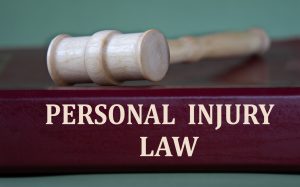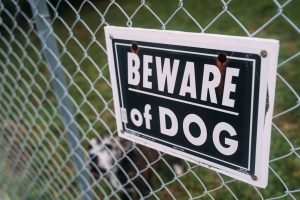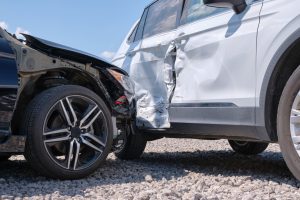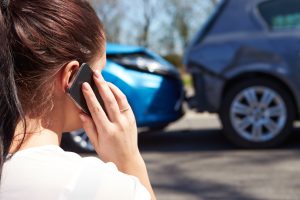How does one take action if they have been involved in a slip and fall accident? Gary tells us and pinpoints the importance of being prepared with sufficient proof.
What are the first steps taken in a slip and fall case?
Commonplace premises liability cases are varied. In the subcategory of slip and fall, typical cases are slipping on a wet floor, falling because of a defective stairway, or falling because of a cracked walkway. The goal of premises liability law is to place the plaintiff in a position he would have been in, but for the negligent behavior of the defendant.
A reasonable pre-filing investigation is a necessity before an action is contemplated. The filing of the Petition or Complaint must set forth facts that support a legal theory for monetary recovery. The best practice is to follow the patterned jury instructions of the chosen venue as a guidepost.
For premises liability, with some exception, an injured party in Missouri must file within five years of the injury, in Illinois two years, and three years in New York.
The injured party’s pleading, in most cases, is filed in the court of the same county where the injury occurred. It is important to learn the time limitations of the lawsuit, which are different for each category of cases capable of litigation. If these limitations are not followed, after receiving the defendant’s motion, the court will issue an order barring consideration of the case, regardless of its underlying merits. These time limits, called Statutes of Limitation, vary and are determined by the legislative bodies of each state. For premises liability, with some exception, an injured party in Missouri must file within five years of the injury, in Illinois two years, and three years in New York.
What proof should be collected for such a case?
Two keywords, unreasonable and foreseeable, have spawned much litigation in the United States.
To succeed in a lawsuit, a plaintiff must plead and prove, before a jury or judge (if a bench trial), that the responsible party or parties were legally responsible. There is no absolute liability in typical premises liability cases. This means the responsible party must be the owner or proven to have a legal ownership interest in the property causing the plaintiff’s injuries. In the example of a slip and fall case, where a plaintiff injures his leg, because of an accumulation of water in a grocery store, if the plaintiff establishes an ownership nexus, of the putative defendant, then that person owes a duty of providing a safe shopping environment. The plaintiff must prove by the greater weight of the evidence, a violation of that duty by some action or inaction. The law refers to the violation of this duty as negligence. Negligence may be distilled to: Did the owner (defendant) either by his actions or inaction create a reasonably foreseeable, unreasonable risk of injury to the plaintiff.
Thus, Counsel for the plaintiff must learn when the dangerous condition occurred.
Two keywords, unreasonable and foreseeable, have spawned much litigation in the United States. An event (accumulating water on the floor) causing an injury (a broken leg) must be proven, before answering the ultimate question of whether the property owner used reasonable care to prevent the slip and fall. The defendant must know or be charged with knowing about the hazardous accumulation of water. Even if the defendant did not know of the hazard, he may be charged with knowledge of it, if the plaintiff convinces the trier of fact that the defendant should have objectively known of the dangerous condition, which resulted in the plaintiff’s injury and damages. Furthermore, the injury must be a foreseeable result of the defendant’s lack of due care. The defendant must have reasonable notice of a dangerous condition and the failure to act causing the likelihood of the resulting injury.
Thus, Counsel for the plaintiff must learn when the dangerous condition occurred. A broken jar of pickles, one minute before the accident, without further culpable facts, could become problematic in establishing the defendant’s lack of due care. It is important to obtain surveillance footage, to learn the identity and observations of all witnesses, to learn of any relevant comments made on social media, and whether the defendant had a regular program to surveil the store isles, not only for spills, but other dangers, such as broken glass, or compromised flooring. Other factors include the adequacy of lighting and the availability of warning cones, while the safety issues are addressed.
Our legal system has dramatically changed. I see more unethical practices by members of the Bar and a general lack of preparedness.
Plaintiff’s conduct is also relevant. Was the injured party inattentive? Was the plaintiff wearing flip-flops? Was the plaintiff distracted talking on a cell phone or running to corral misbehaving children? You can be assured cell records will be subpoenaed, and the defense will obtain the first look at any surveillance footage. Relief will be denied, in part, if the plaintiff’s behavior contributed to his injury.
If surveillance footage captured the plaintiff frantically chasing his children through the grocery aisles, oblivious to the warning cones, his damages would suffer a major hit because of the comparative fault rule, which would reduce any reward based upon the percentage of the plaintiff’s fault.
About Gary:
What challenges have you had to overcome in the years in order to get to where you are now?
Learning to tolerate people with whom I disagree, leaving the door open for later agreement.
Do you have a ‘pre-court’ ritual? How do you prepare for tough cases?
I prepare legal monographs for early settlement analysis. These monographs are also given to the client to internalize his case for pretrial discovery. I prepare trial notebooks immediately. At trial I have several notebooks available to deal with different scenarios. My goal: Never be flat-footed, by preparing for the unexpected
What has been your biggest achievement in the past 12 months?
Establishing “The Apoian Public Services Law Group” , the charitable arm of the Apoian Law Group, LLC
How have you seen the legal sphere change in the years you have been practising?
Our legal system has dramatically changed. I see more unethical practices by members of the Bar and a general lack of preparedness.
Haig Gary Apoian
Founder & Managing Partner
Apoian Law Group, LLC. Licensure: Missouri, Illinois & New York
2010 S.Big Bend
St.Louis, MO. 63117
apoianlaw@charter.net
www.linkedin.com/in/apoianlaw
Haig Gary Apoian is Founder of Apoian Law Group LLC. He graduated from Northwestern University Pritzker School of Law in 1980 and has since practiced as a trial attorney. His practice focuses on litigation, commercial litigation, personal injury law, consumer law, labor and employment law, entertainment law, and corporate law.




















